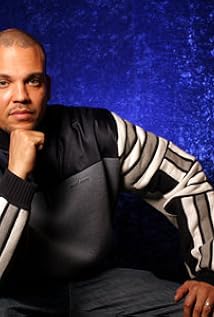
In that same year, Quincy Jones turned his attention to another musical area that had long been closed to blacks - the world of film scores. In 1964, he was named a vice president of Mercury Records, the first African American to hold such an executive position in a white-owned record company. 1964: Jazz musician, arranger, and composer Quincy Jones works with legendary singer and actor Frank Sinatra.Īfter a personal loan from Mercury Records head Irving Green helped resolve his financial difficulties, Jones went to work in New York as music director for the label. European and American concerts met enthusiastic audiences and sparkling reviews, but concert earnings could not support a band of this size, and the band dissolved, leaving its leader deeply in debt.
#QUINCY JONES III PLUS#
With musicians from the Arlen show, Jones formed his own big band, with 18 artists - plus their families - in tow.

A European tour closed in Paris in February 1960.
#QUINCY JONES III FREE#
As musical director of Harold Arlen’s jazz musical Free and Easy, Quincy Jones took to the road again. In 1957, Quincy settled in Paris, where he studied composition with Nadia Boulanger and Olivier Messiaen, and worked as a music director for Barclay Disques, Mercury Records’ French distributor. Shortly after his return, he recorded his first album as a bandleader in his own right for ABC Paramount Records. (Getty)īy 1956, Quincy Jones was performing as a trumpeter and music director with the Dizzy Gillespie band on a State Department-sponsored tour of the Middle East and South America.

Quincy Delight Jones Jr., 27-year-old musician and conductor, with his Big Band in Vienna, Austria. Jones settled in New York, where, throughout the 1950s, he wrote charts for Tommy Dorsey, Gene Krupa, Sarah Vaughan, Count Basie, Duke Ellington, Dinah Washington, Cannonball Adderley and his old friend Ray Charles. The stint with Hampton led to work as a freelance arranger. on March 14, 1933, in Chicago.Īt 18, the young trumpeter won a scholarship to Berklee College of Music in Boston, but dropped out abruptly when he received an offer to go on the road with bandleader Lionel Hampton. 1935: Quincy Jones (left) and his brother, Lloyd. The two youths formed a combo, eventually landing small club and wedding gigs. While barely in his teens, Quincy befriended a local singer-pianist, only three years his senior. He first fell in love with music when he was in elementary school, and tried nearly all the instruments in his school band before settling on the trumpet. When he was ten he moved, with his father and stepmother, to Bremerton, Washington, a suburb of Seattle. Lil Wayne loses court case with Quincy Jones III, has to stump up $2.Quincy Delight Jones, Jr., known to his friends as “Q,” was born on Chicago’s South Side. Of course, it would be churlish to post the video again considering…sod it, here it is in all its madcap glory. You’ll remember that Lil Wayne’s cussed deposition during the case went viral. Wayne wasn’t present to hear the verdict announced – following those alleged seizures, he is reportedly still convalescing. The cost is described as covering the financial damage sustained by Jones as a result of Wayne nixing the film’s original release. Wayne lost the case, and was subsequently countersued by Jones et al.Įxclaim report that Wayne has now been ordered to pay out $2,195,000 to Jones.

Somewhat oddly, Wayne claimed that the film used his songs without his express permission, and attacked the documentary makers’ “scandalous portrayal” of his character. The suit related to Jones’ 2009 highly entertaining Weezy documentary The Carter, which followed the rapper in the period 2007-8. To recap: back in September, Lil Wayne launched a lawsuit against film producer Quincy Jones III (son of the super-producer of the same name).


 0 kommentar(er)
0 kommentar(er)
